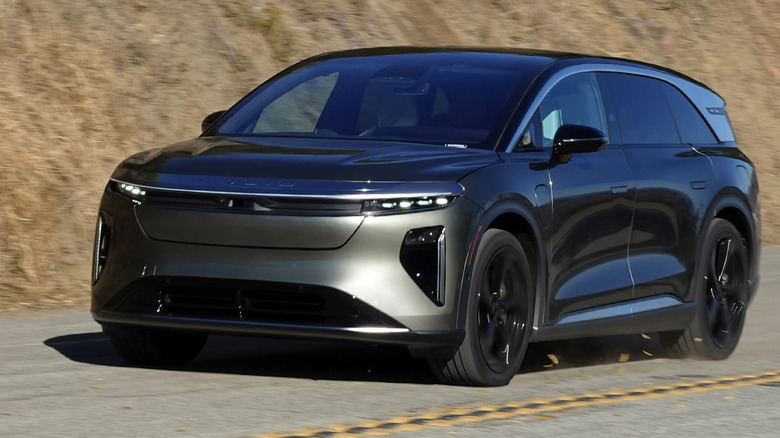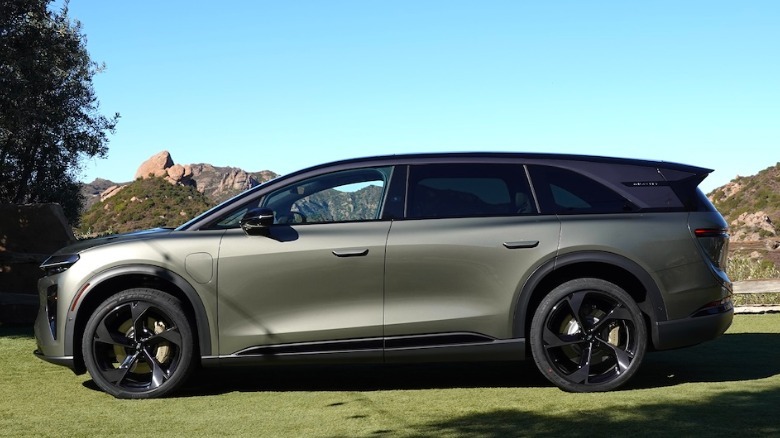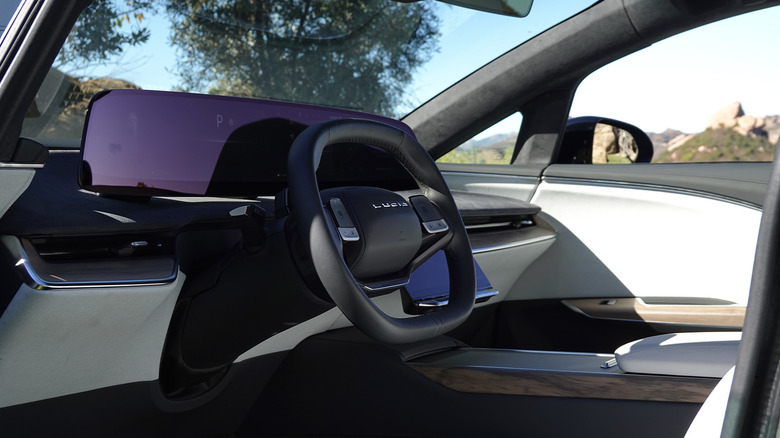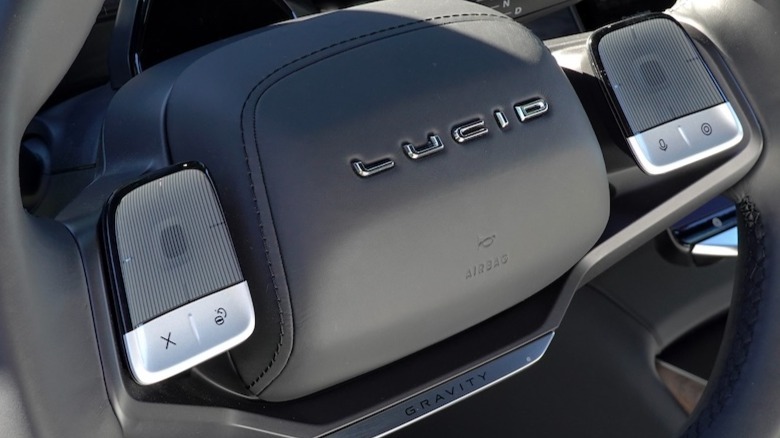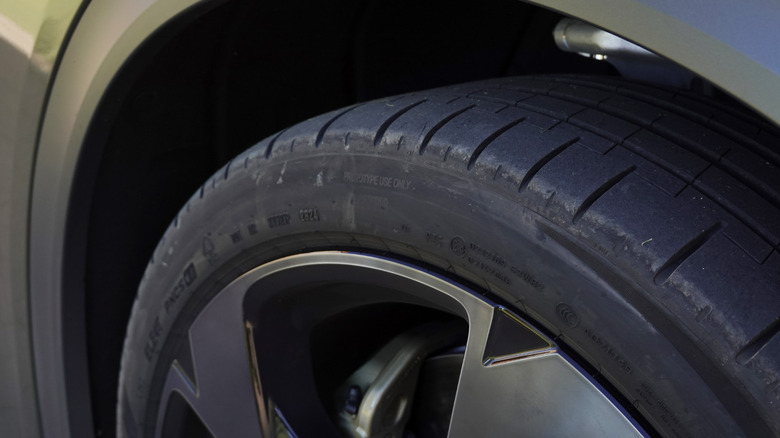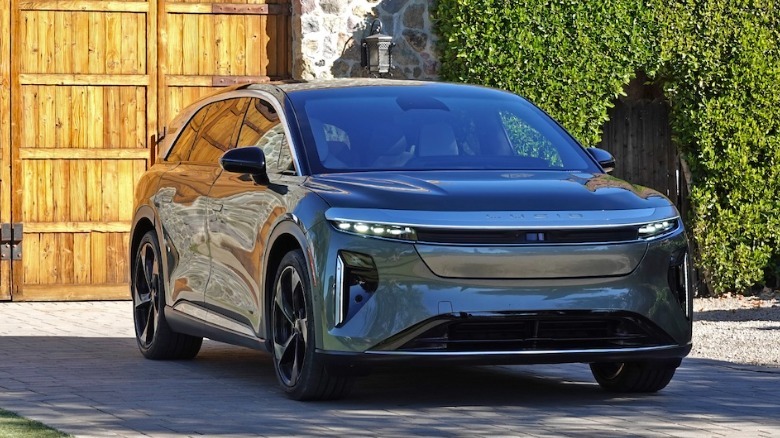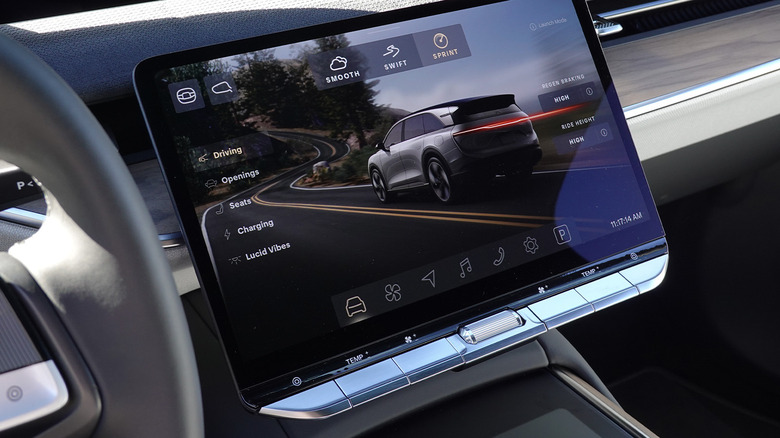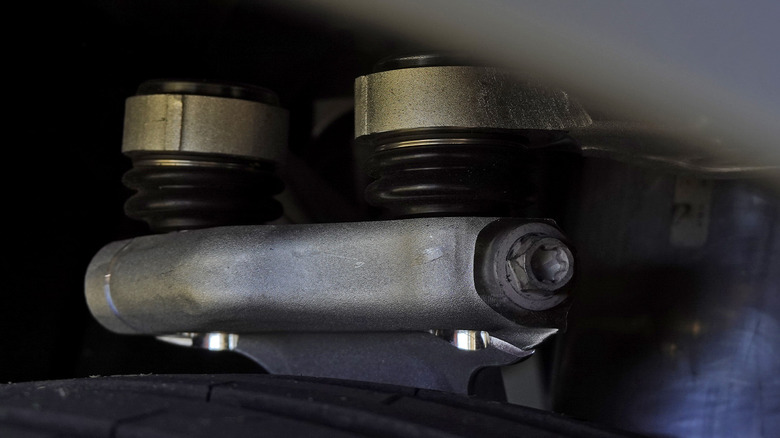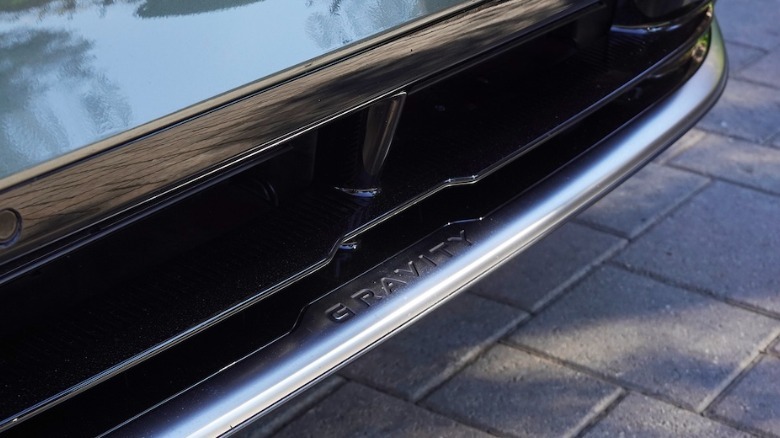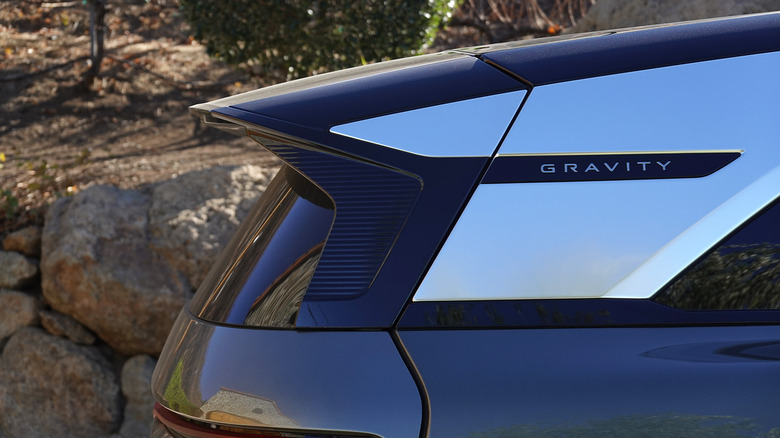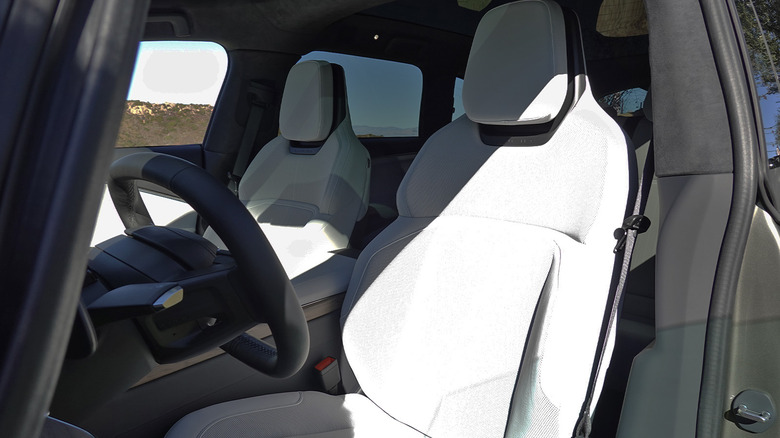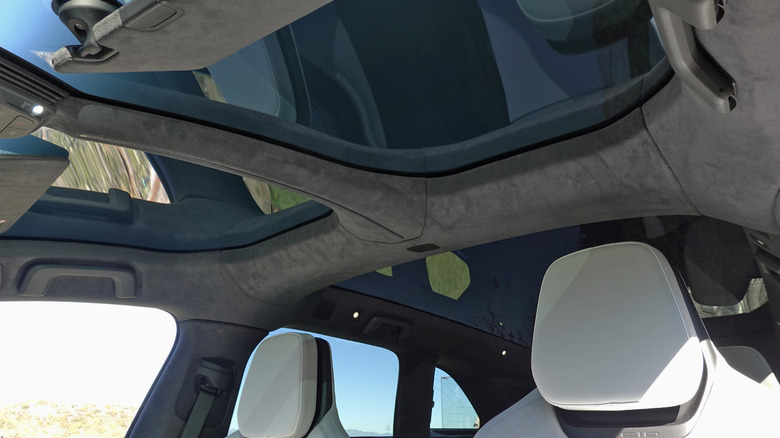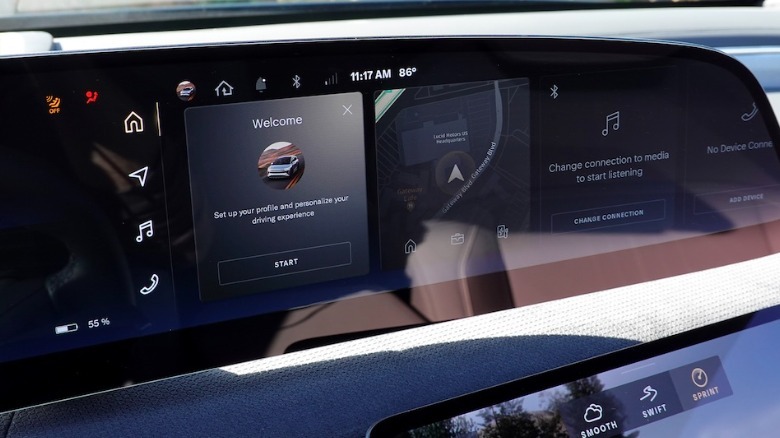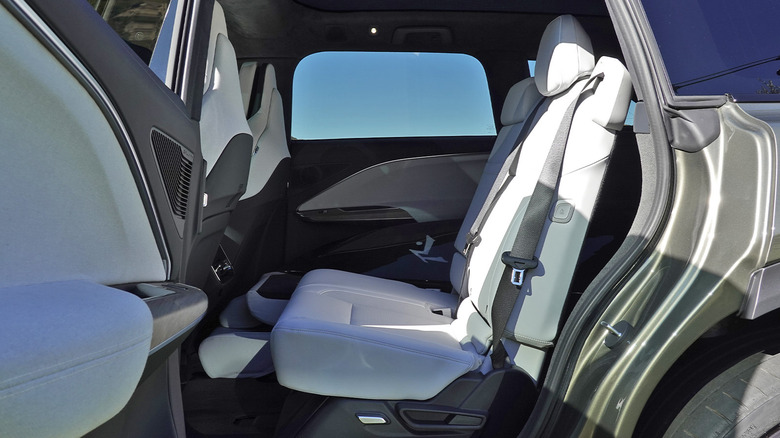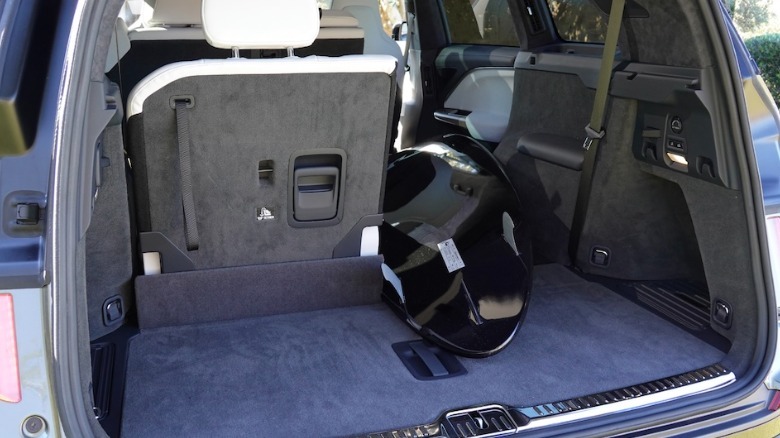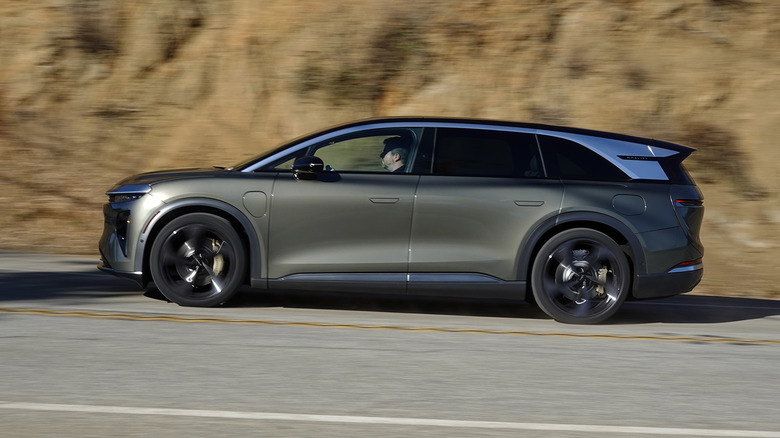2025 Lucid Gravity First Drive: Supercar Meets Minivan
Driving the new Lucid Gravity, the acronym SUV for Sport Utility Vehicle begins to fade into the past. This kind of optimized potential, designed from scratch with such a thoughtful level of engineering, simply bedevils definition in the first place: the performance of a supercar meets the capability of an off-roader and the interior spaciousness of a minivan. Truly, Gravity's launch represents a redefining moment for automotive concept and execution. But will the public understand, comprehend, appreciate, and finally purchase such a comprehensively iconoclastic vehicle?
Gravity officially entered production last week at Lucid's factory in Casa Grande, Arizona, alongside all the various variants of the Air sedan. But where the Air catered to a purposefully small subset in the sedan segment, Gravity needs to boost Lucid's market presence and general recognition with a level of sales volume that can sustain this upstart's expanding business model. Because as much as the Air set new standards for electrification, this SUV similarly establishes new industry benchmarks in terms of power, range, efficiency, interior volume, and pure utility.
The very next day after Gravity SUVs first began rolling off the line, Lucid invited me to Malibu to take a pre-production car for a test drive. On a beautiful sunny Friday, hot roads and minimal traffic let me warm up the Gravity's tires, with chief engineer David Lickfold in the passenger seat as I attempted to restrain myself from quadrupling the legal speed limits.
An easy SUV to drive hard, or easy
Straightline speed only tells part of the story, though. And not that any cops hiding around the next bend might hear us coming, anyway, unlike the absolutely raucous Aston Martin Vantage that I drove to the event (more on that later). Yet the strange sensation of pulling just as hard as any supercar, in absolute silence, still sets the stage for comprehending Gravity from a wider perspective.
Not just because Lucid decided to develop a new front subframe that houses the electric drive motor in two insulated cradles, to reduce the audible whine of electric propulsion from creeping into the cabin. And not just because of the unbelievably dialed steering, on the lighter end of the spectrum yet just as, if not more, crisp and communicative than the best sports cars on the market.
But more so because sitting upright in a captain's chair, as I gently feathered a "squircle" steering wheel, cornering at g forces unbeknownst to any other SUV—all as the ventilated and massaging seats worked through the knots in my back—I might as well have been calmly hauling six kids to school, running an errand to pick up groceries, or heading out on a days-long camping expedition without needing to haul around a tent.
Learnings from the Air Sapphire
From my right side, Lickfold explained just how much Lucid learned from buillding the Air's most extreme variant, the tri-motor Sapphire with every last of its 1,234 horsepower and bigger wheels and improved aero and more carbon bits on everything. Due to the sheer output, for example, Lucid brought all traction and stability control programming in-house. The argument of whether to encourage pure power slides or more Swedish flicks to initiate drifting came up more than once. How to manage braking and rear-wheel steering at godforsaken pace, too.
Gravity in real-world form benefits wildly from the grist of such conceptual mastication. Of course, the low-slung skateboard battery helps to provide an optimal polar moment of inertia despite the more upright SUV profile. And this specific Gravity, as equipped with the Dynamic Handling Pack, also employs triple-chamber air suspension and the rear-wheel steering, with separate actuators for each wheel as seen on a Porsche 911. Switching into "Sprint" mode at the bottom of Encinal, the steering tightened up, the chassis dropping noticeably to a lower ride height, and the airbag valving stiffened up the pressurized spring rate. Here we go.
Dual motors get the job done just fine
Stomping on the accelerator pedal, which Lickfold cleverly refers to as the "A pedal" (versus the "B pedal" for braking), brings on the sheer jerk that only the world's most extreme internal-combustion hypercars can match. And then Gravity keeps pulling, shoving both of our heads back onto the pillowy headrests, well past the limits of sanity until only my respect for road conditions demands attention.
I slowed down to avoid catching air over a small dip and rise, trying to remember that this Gravity lacks the Sapphire's third motor. Still, 828 horsepower unleashed instantaneously works sufficiently, and the dual-motor layout allowed me to step off the A pedal to allow a bit of regen to set the nose, before I eased more solidly into real braking and began to turn into a long right-hander.
No way this SUV weighs 6,000 pounds, I thought
The compliance of air suspension allows a bit of weight transfer to the outside corner, smoothly and predictably setting the Pirelli P Zero PZ5 tires onto shoulder blocks without the kind of rock-solid ride that typically renders many supercar uncomfortable on a road this rough. I slowly lifted off the B pedal with a bit of trail braking, but the steering wheel informs me of my mistake. Turns out that with all-wheel-drive and perfect weight distribution, I can two-foot through the transition earlier, and allow the front and rear axles to push-pull out of every corner.
Alright, noted, but also in this 6,000-pound-plus three-row (including Lickfold and myself), I wonder how late I can hold off from braking before ABS kicks in. Then I discover how late I can hold off from braking before ABS kicks in, and how much the telepathic squircle allows for silly little flicks of confident countersteer, and where the Pirellis let loose from a mild howl to a louder shriek and slide as I settle into the rhythm of Decker canyon's upper reaches.
Incredible pace and performance
By 15 minutes in, I'm pushing far harder than I ever could in the Vantage, which requires more cognizance due to the tail-happy nature of such a boisterous front-mounted engine, plus undeniably outdated traction control programming that barely works (read: works beautifully, in the scariest way possible). Power stats notwithstanding, I'm beyond even Porsche Cayman GTS 4.0 or Lotus Emira pace on these same roads, in a car that weighs right around double either of those two mid-engined masterpieces and can seat seven. Heaven preserve us.
Every little pebble of road surface tickles my fingertips and every rolling crest of pavement brings on a scant second of electric overrun, as even my tiniest inputs reveal how unflappably the Gravity simply hustles to and fro, side to side, up and down the canyons in almost rally car fashion. And speaking of, Lickfold promises serious off-roading capability, again not just thanks to the nine inches-plus of ground clearance available with the air suspension pumped up to Terrain mode, but also because of that 1,000-hertz processor power.
Dreaming of a rally setup
My tester rode on the staggered 22- and 23-inch wheels that come with the Dynamic Handling Pack, shod in 265-millimeter fronts and 285-millimeter rear Pirellis. But the smallest availabe set of staggered wheels measures 20 and 21 inches, with Hankook Ion Evo all-seasons (mid-range 21/22s shod in Michelin Primacy Tour rubber are also available). And yet, despite—or maybe because of—the imperturbable chassis, I would as always recommend the smallest wheels possible. Why not throw on the chunkiest knobbies available and hit the trail?
Well, then we need to enter the range conversation. The official EPA estimates vary depending on spec, but Gravity tops out at a max of 450 miles. The batteries carry over from the Air's Grand Touring trim, which translates to 112 kilowatt-hours of capacity. Unlike that Air, though, an extra little hump of cells sits under the front two seats to allow the Gravity's rear rows to fold down completely flat.
A massive passenger cabin
Doing so creates so much space that Lucid can compare the Gravity to a Suburban without any hyperbole. Forget a Model X or R1S or Porsche Cayenne, I can stretch out fully on a mattress in the back of this SUV—which I also must note looks much smaller outdoors than in Lucid's initial press imagery and the LA Auto show concept car.
Meanwhile, the gauges and screens only further enhance the stellar interior design that Lucid debuted on the Air. At 6'1" with long limbs, I set the driver's seat to my ideal position slightly higher than the absolute lowest setting, and here the squircle steering wheel's top edge lives just below the bottom of the 34-inch OLED display and my line of sight continued over to catch the front of the long dash and a hint of curved hood.
A supervan, in the best way possible
That upright seating position further reinforces the differences between Lucid's sedan and SUV ergonomics, even if the seats themselves still envelop me in a level of luxury that only Rolls-Royce and Bentley (and strangely, GMC) can match. For a few minutes, I even resisted the urge to keep ripping up the roads of Malibu in Sprint and tried out Smooth, which pumps up the air suspension a bit but — with the triple-chamber valving — actually rides softer than the Air's softest mode. Suffice to say, the comfortable cruising of a super-luxury meeting the all-out pace of a supercar boggled my mind, all with the three-row spaciousness of a large minivan and the utility of an SUV.
Where I often compared the Aston Martin DBX707 to a true supervan (sorry Ford) as a form of criticism, in this case, Lucid's Gravity perfectly encapsulates everything great that Americans forgot about minivans in their obsession with crossovers. Blame the marketing maybe, all those aspirational adventures out from the sprawl to hidden hiking spots. I love a CX-50 and an SQ5, but neither can do everything a Gravity can—and it's not even close.
Driving as therapy
Some of the features that Lucid plans to debut for Gravity border on gimmicky, though, most of which I lacked the time (and inclination) to try out. I never noticed the augmented reality head-up display, only used the questionable steering wheel trackpads to adjust my mirror and steering wheel positioning, and didn't feel the urge to try out the meditation programming. I can appreciate the digital detox mode, which limits the gauge display to minimal speed and safety warnings only, but pairing work productivity apps with mindfulness reminders seems contradictory, catering to the increasingly common wellness industry's lexicon of holding space, manifestation, and mind-body integration that borders on self-help gibberish.
After all, I don't need to relax after driving the Lucid Gravity. In Smooth, I was already swaddled in utmost luxury. In Swift, I sang praise at the alter of electric performance. The car itself is my therapy, Gravity grounding my mind, body, and soul. Even in dual-motor Grand Touring trim, at just shy of six figures. Though now, I fear my faith lacks the fortitude to bear a long wait for the tri-motor Sapphire variant, the inevitable next step that promises another revelation in this liminal era of indefinable automobiles.
